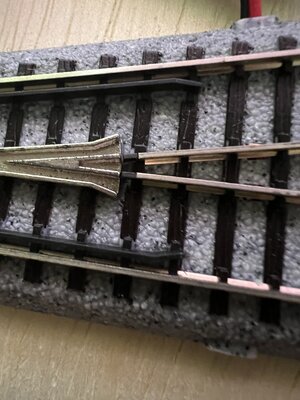OP:
It's just the way they were made, when they were made.
I found this out when I built my (small) HO layout using Kato Unitrack.
(all of what follows below is in regard to their HO gauge track -- I have NO experience with N gauge)
The POWERED #4 switches (now discontinued, I think) are power-routing and this cannot be changed.
All the MANUAL switches I've used (both #4 and #6 have user-selectable power-routing or non-power-routing).
I can't remember whether the POWERED #6 turnout allows the user to select power-routing or not. I've only got one of them in service, and it's in the back and works "as it is now".
The recently introduced 2-852 and 2-851 manual #4 turnouts (not sure if the latter number is correct) probably have selectable power-routing.
My advice is to disregard reply 5 above.
Reason why: any messing with Kato switches may lead to a bunch of headaches, particularly with the mechanical "switchgear" concealed underneath the ties. I found this out the hard way. Try taking a powered #4 or #6 switch apart, and getting it back together again! Upon examination, I've found the POWERED #4 switches have "built-in gaps" behind the frog, right out of the box.
If you need powered turnouts, my recommendation is to buy MANUAL Kato switches and then add the power module. The only problem I've found with these is that when it gets cold (below, say, 50F), you have to be careful when throwing the switches for the diverging route, that the points go all the way over. No problem with "normaling up" the points. Warmer weather -- they work just fine.


